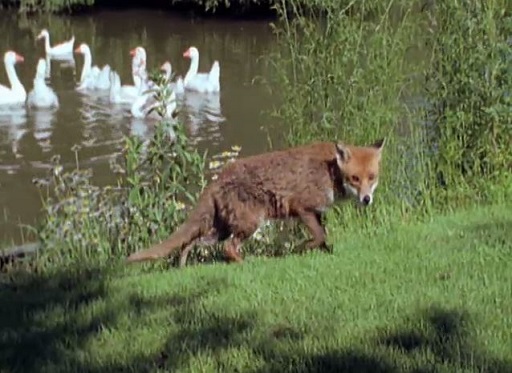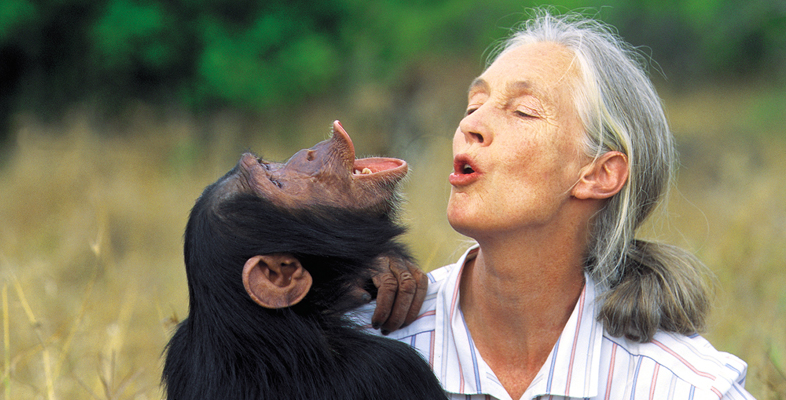7.2 Studies on animals’ understanding of false belief: deception
As you learned in Section 6.4 of this course, comparative laboratory studies using the food competition paradigm have failed to provide evidence that chimpanzees understand that others can have false beliefs; although they do suggest that chimpanzees have some understanding of others’ perception and knowledge.
Another strategy for looking for signs of false belief understanding in animals, is to consider whether they seem to engage in acts of deliberate deception. In humans, the ability to deceive is closely linked to the understanding that other people can have false beliefs. For example, a footballer who strives to instil in a goalkeeper a false belief about which way the ball will be heading. This deliberate attempt to instil a false belief in another is known as deception. This raises the question as to whether animals also display evidence of deliberate deception, and if so, whether this might indicate that they, too, understand that others can have false beliefs.
This next video discusses evidence that animals can deceive, drawing upon naturalistic examples rather than laboratory studies. It considers what this evidence might tell us about animal understanding of others’ mental states.
Watch the video and then answer the questions in Activity 13.

Transcript: Do animals lie?
Activity 13 Deception in animals
1. In the video you have just watched, how does Professor Celia Heyes explain ‘functional deception’? Give an example of this type of deception in relation to animals.
Answer
Heyes notes that functional deception (also known as ‘tactical deception’; Whiten and Byrne, 1988), involves behaving in a way that leads another animal to make a mistake. However, the important point about functional deception is that it does not require an understanding of others’ mental states or an attempt to manipulate these. An example of functional deception in animals is when an animal changes its appearance in order to mimic another type of animal, thereby deceiving a predator. You may have thought of other examples.
2. Does deceptive behaviour in animals indicate that they may have an understanding of others’ mental states in any contexts?
Answer
As you saw in the video, theorists have different perspectives on this question. Some view instances of deception by animals as not involving any deliberate effort, or ‘thinking’, whereas, for others, some examples of deception by animals provide compelling evidence that they do ‘think’ about goals, and ways of acting to achieve these. Heyes points out that the ability to deceive can come about by associative learning, which does not involve an understanding of false belief in others; rather, it involves an animal learning that, if it behaves in a certain way, this can lead another animal to behave in a way that benefits the first animal.
3. What might be the most compelling evidence that animals intentionally deceive others by trying to manipulate their mental states?
Answer
Deceptive behaviour that appears to be flexible and adaptive might provide the strongest evidence. Consider Jane Goodall’s example of the young chimpanzee who suppressed his urge to make excited calls when presented with food, so as not to alert dominant members of the group. Might this be explained in terms of the chimpanzee understanding that, if he made a noise, the others in the group would come to know that there was food available, but that if he kept quiet the others would not gain this knowledge? The issue of competing explanations emerges here, since this behaviour could just be an example of associative learning, rather than reflecting a genuine understanding of how to influence the beliefs and knowledge of others.
The issue of whether animals intentionally deceive, by setting out to manipulate another’s mental state, remains debated. Some theorists have argued that intentional deception is a uniquely human cognitive ability (e.g. Cheney and Seyfarth, 1990; Tomasello and Call, 1997).
In naturalistic contexts, such as when an animal refrains from giving a food call so as not to alert other animals to the presence of the food (as you saw illustrated by the chimpanzee example in the video you have just watched), deceit might be a behaviour that they have learned maximises their own chances of getting the food (Heyes, 1998).
Controlled experimental studies investigating deception in animals, such as those which have tested whether chimpanzees can learn to refrain from indicating the location of hidden food, have found that it typically takes very many trials for the animals to learn to do this. This has led some psychologists to suggest that an associative-learning explanation might be more plausible than one that involves the animals having an actual understanding of how they can manipulate others’ mental states (as noted by Hare et al., 2006). However, Hare and colleagues (2006) used an adapted study design, from which they report finding evidence that chimpanzees can purposefully attempt to manipulate the mental states of others.
So it seems that both laboratory-based and naturalistic studies of ToM in animals are open to different competing interpretations. This has led to debates between theorists about which interpretation is the most plausible. Considering data from a range of different methodological approaches seems likely to be a good strategy in trying to answer questions about the nature of animal minds.
